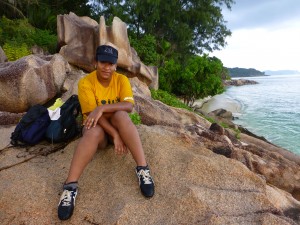World Wildlife Conservation Day
Today is a day to learn about the state of the world’s wildlife, conservation programmes, and how you can do your bit to protect our wildlife and their ecosystems.
World Wildlife Conservation Day comes at a time of year when most of us are curling up indoors, or venturing bravely out to face the Christmas shopping crowds. It’s difficult to think of a time of year where we feel less connected to the wildlife around us, in fact, in the UK, much of it has left for warmer places or is taking refuge underground. A fuzzy reindeer jumper might just be the closest many of us get to nature for the next few months.
For the EDGE team, the plight of the world’s wildlife is often at the front of our minds, but sometimes we too get caught up in the rush of life and work, and even we can forget what we’re working for. We took this opportunity to remind ourselves why it is we at EDGE are fighting for the survival of the world’s wildlife, and particularly the EDGE species we think are so important. Hopefully, we might inspire some of you too.
I interviewed several members of the EDGE team, to find out why wildlife conservation is important to them, and what their favourite EDGE species is…
Dr Claudia Gray, EDGE Conservation Biologist
“My interest in conservation started with being amazed by how many weird and wonderful species live on the planet, and then realising how many we are likely to lose, possibly before we even know that they exist. This is not only tragic, it is also incredibly foolish given that humans can’t survive without having a vast range of other species around to help us out. I am particularly interested in tropical ecology and conservation because the diversity of life nearer the equator makes it easier to find creatures that are really unusual, either in the way they look or the way they behave. Walking around a tropical forest in the rain is also much more enjoyable than shivering in British drizzle!”
Favourite EDGE species: the Aye Aye
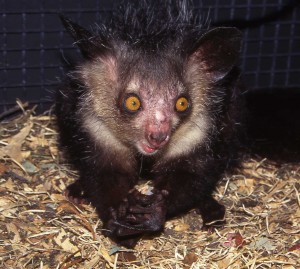
Kirsty Richards, EDGE Corals Coordinator

“It’s easy to care about the big animals, or the cute and cuddly animals, but how do you make people care about the animals they don’t even realise are alive?! Getting people to realise corals are living animals is the first hurdle, after that comes the uphill battle to make them realise corals are integral to life in the ocean. Coral reefs cover less than 1% of the sea bed yet are home to 25% of all marine life – without them the world’s oceans would be a very boring place.”
“Coral reefs cover less than 1% of the sea bed yet are home to 25% of all marine life”
“I must confess I am lover of marine megafauna (sharks, whales, dolphins, turtles – anything BIG and salty), but recently I have turned my attention to the smaller things in the ocean. If you truly get to know corals you’ll find a complex and colourful world of incredible creatures that fight to the death, spawn en-masse and play host to hundreds of invertebrates who eat, clean and live within them. Working on our EDGE Coral projects has challenged me do just this, to jump in and focus on that which often gets ignored.”

Favourite EDGE species: Pearl Bubble Coral
Olivia Couchman, EDGE Fellows Coordinator

Favourite EDGE species: Baird’s Tapir
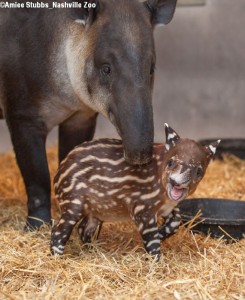
World Conservation:
As the number of species threatened with extinction increases every day, much of the planet’s biodiversity is in danger of being lost. World Wildlife Conservation Day reminds us of the urgency of these issues, and of the need to carry out coherent conservation action on a global scale.
But conservation initiatives in general tend to focus on charismatic and internationally recognisable endangered species, such as elephants and tigers. EDGE aims to address a gap in current conservation efforts – a gap filled with weird, unknown and genetically unique animals. They represent an irreplaceable part of the world’s natural heritage, yet an alarming proportion are currently sliding silently towards extinction unnoticed.
In fact, two-thirds of the top 100 EDGE mammals are receiving little or no conservation attention. The situation is even more alarming for EDGE amphibians, with a staggering 85% currently receiving little or no conservation attention.
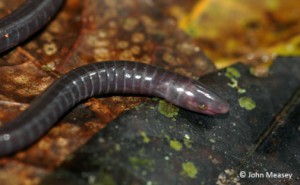
The world would be a poorer place without these weird and wonderful EDGE species. They are truly one of a kind animals and if they were to go extinct there will be nothing like them left on the planet. EDGE species also represent a disproportionate amount of unique evolutionary history (they represent ‘branches’ rather than ‘twigs’ in the evolutionary tree of life) and maintaining this diversity is one way to help life to adapt and evolve in our rapidly changing world.
However, the EDGE approach is designed to work alongside existing conservation efforts, so large, ecosystem based protection and conservation, for example, remains vital for conservation. Conserving the world’s wildlife requires more than just one programme, it will need local conservation initiatives, the global scientific community, the corporate world, governments and, most of all, each of us in our everyday lives.
EDGE aims to ensure that some of the world’s most remarkable species don’t fall through the conservation net and fade to extinction unnoticed.
Important steps have been taken to conserve EDGE species:
One EDGE species whose fate has been changed for the better is the Seychelles sheath-tailed bat. This species has been the focus of EDGE Fellow Diana Renaud’s two year fellowship project.
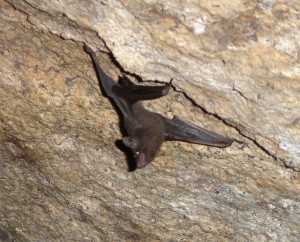
This bat belongs to an ancient family of sheath-tailed bats, so-called because of the membrane which stretches between its hind legs. By adjusting its hind legs in flight, the membrane can be lengthened or shortened as it slips over the tail, increasing manoeuvrability in flight. Previously common on the Seychelles Islands, this bat has undergone a severe population decline over the past 30 years.
“Protection of known and potential roost sites, habitat management, assessment of the impact of introduced predators, monitoring of known populations and public awareness programmes are urgent conservation actions for this species”
When Diana set out on her fellowship she had an ambitious aim to secure legal protection for this species in the Seychelles, including its roosts and immediately surrounding foraging areas, which would help to conserve current and future populations. After months of hard work, at the end of 2014 a law was enacted in the Seychelles to protect the Sheath-tailed bat. This is an incredible step forward to ensuring the survival of this species.
Go online today and join the thousands of others who will be learning about wildlife conservation and why it matters, to everyone. Learn more about wildlife conservation today, spread the word and learn how to become a responsible consumer, which is one of the most powerful and effective things you can do as an individual, because your use of the Earth’s resources impacts all species, including EDGE species, including ourselves.
With so many species on the EDGE we need your energy and ideas to help save them. Be a champion for the extraordinary and help us secure a future for EDGE species. Our step by step guide to becoming an EDGE Champion will help you achieve your fundraising goals. Click the link to find out more and to join the EDGE Champions community: https://www.edgeofexistence.org/champions/default.php?causeID=0
For a PDF containing information on past projects, helpful tips and inspiration click here: https://www.edgeofexistence.org/downloads/fundraising_guide.pdf
